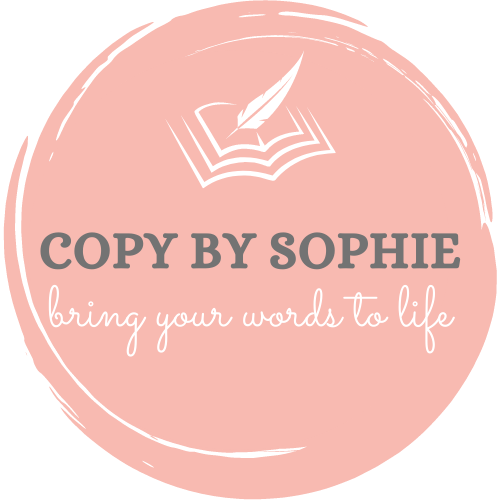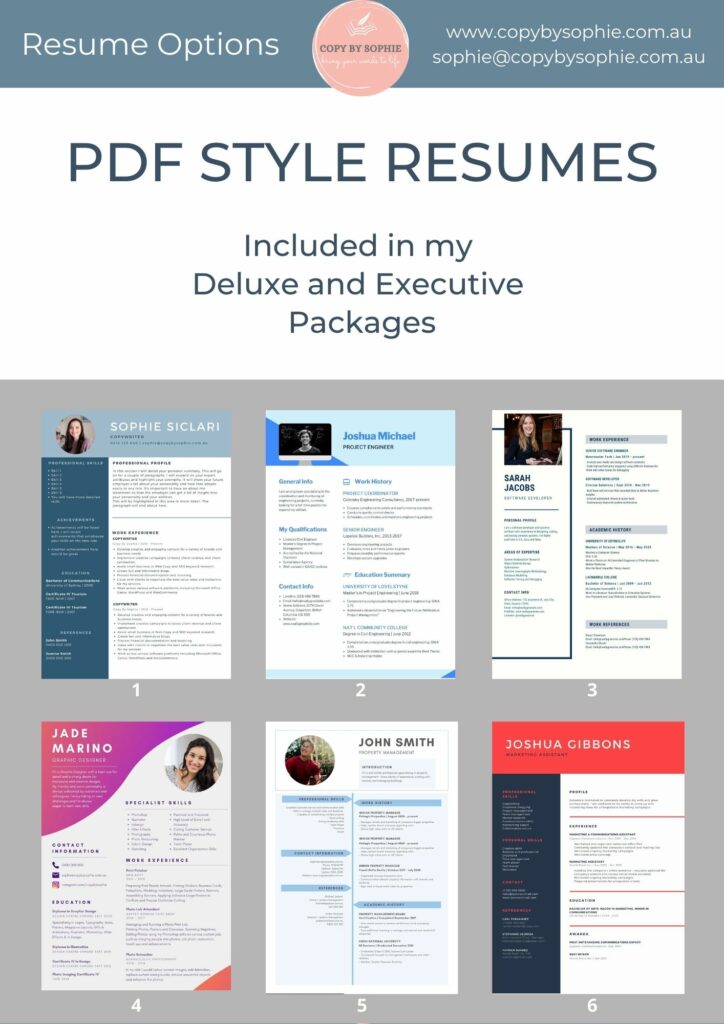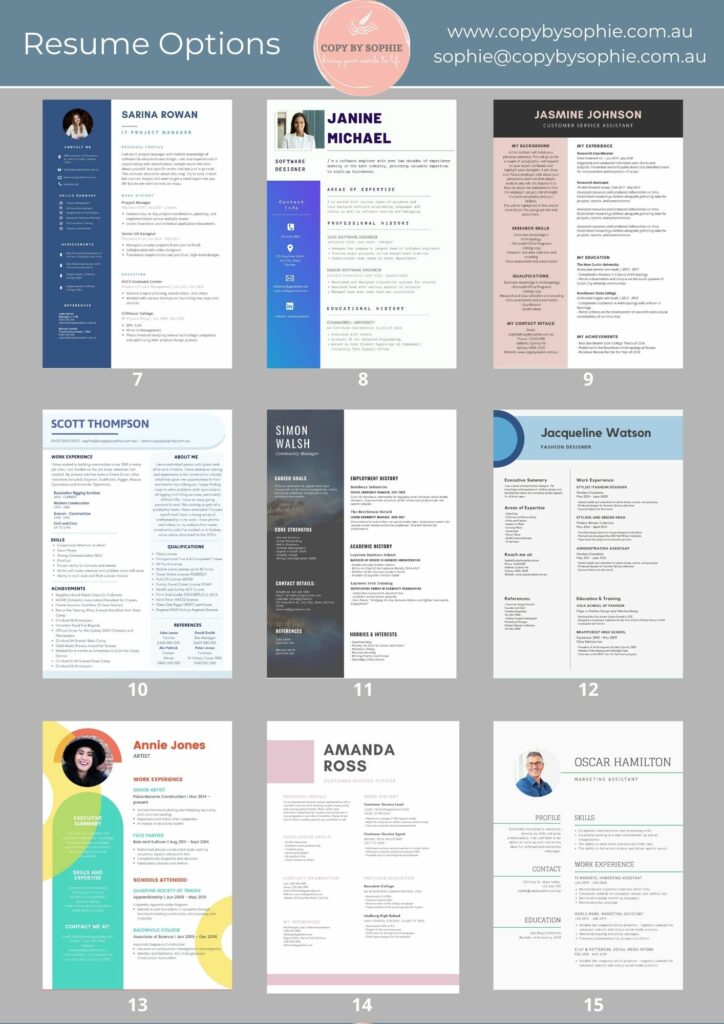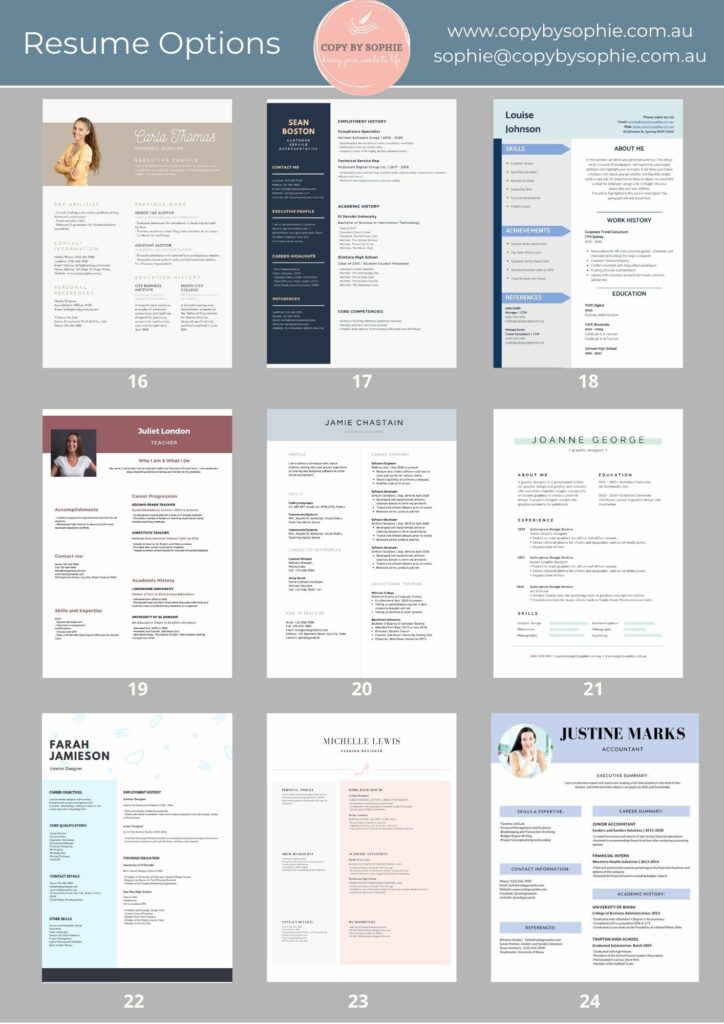Resume writing tips to land you your DREAM JOB
Have you been staring at a blinking cursor?
You’re not alone. Many people are trying to rediscover their abilities and struggle to put the right words to paper. With almost one million Australian’s now on unemployment and not as many employers looking for staff, the competition is tough!

Here are some quick and easy tips on how to write the perfect Resume and Cover Letter.
FIRST THING’S FIRST, Let’s cover the basics …
It’s important to know the role of a Resume and Cover Letter …
Many people will try and combine both on one page or mix them around, but they have very distinctive purposes and should be separated into 2 different documents.

Your RESUME is considered your ‘base’ document.
It has all the details and information about your history. It will give the employer an idea of how much experience and education you have and what your skills and achievements are. Think of a resume as a list of all the facts.
Your COVER LETTER needs to be personalised to match the role you are applying for.
This needs to be specific to the role and is generally around 4-5 paragraphs. The Cover Letter can amplify and expand on all your skills and how they are going to help you in the new role.
Let’s do a quick example…
Sharon is applying for a role as a Bridal Shop Assistant. She has all the necessary qualifications which are listed on her Resume. On her Cover Letter, she has added the following:
“Wedding couture has always been an indulgence of mine and I enjoy keeping up with the latest trends and fashions. I am confident in my ability to guide brides through all their choices and help identify what is going to work best for them.”
This paragraph has nothing to do with her history or education but instead how she can specifically adapt to the role, so this will go on her Cover Letter only.
Think of it like this…
Your Resume is the Suit & Tie, while the Cover Letter will detail why you look so good in it.

Step 1: Keep it simple!
The most common mistake we make is to overload our resumes with too much information and make them look cluttered. Your employer may have to sift through over 300 resumes and the last thing they want to do is read an essay for each one. They are looking for sharp, concise information that gets to the point. Make sure there is lots of white space so that the content is clear and stands out. Use bullet points to list your previous work experience, skills and achievements.
Always double check your contact info. A missing digit on your phone number could cost you a job! Your resume should have at the very least, a phone number and an email address. Optional extras are a website link, LinkedIn profile and Postal Address.

Should I add a photo to my resume?
Photo’s are completely optional. They tend to work very well for sales roles but are less popular on corporate or executive resumes. If in doubt, leave it out. I can modify any of my resume options to include or remove a photo.
Step 2: Include an ‘About Me’ section.
This is just a brief paragraph (not bullet points) about yourself that is not directly aimed at any particular role. This section is just to highlight your personal attributes that benefit your overall character. Examples would be:
- I’m a creative thinker
- I have excellent attention to detail
- I enjoy working in a team environment
Once you have a few good points, make a paragraph out of them that gives a quick overview of your personality.
These types of personality attributes give the employer a feel for your personality type and motivation. It’s important though to think of it as a small and brief intro only. Save the long-inflated statements for your cover letter.
Step 3: Set up your ‘Work History’ Section
Always note your most recent role first and work backwards. Allow 5-8 bullet points for the most recent role and try to keep the others to a maximum of 3 bullet points only, especially if they are more than 10 years old. Try to condense the information so that it is short but informative. Avoid repetition in job roles and use a thesaurus to come up with alternative and creative word options. Any positions that are over 20 years old should be limited to 1 bullet point and if they’re not relevant to the new role, you can just list the place of work and job title. Remember…we need to keep this around 2 pages only.
Everyone will have a different set up on this so it’s difficult to give blanket advice. Some people may have worked one job for 20 years and others might have 20 jobs in 20 years. It’s important to make sure it looks clean and tidy. Feel free to contact me if you need help on this.
Always ensure your skills are transferrable to the new role!
Here’s an example … you have worked as an Administrative Assistant for 15 years but also worked at a Burger Shop when you were 18. The role you had at the Burger Shop doesn’t have much significance to the roles you are applying for but there are always transferable skills, for example, your burger shop duties could be noted as…
- Maintain very high levels of customer service and attend to all Health and Safety procedures, ensuring protocols are followed.
It’s accurate, concise and still flows with the rest of your resume.

Step 4: Add skills and achievements that highlight your character strengths
There are no rules to how and where these appear on your resume. Many candidates now opt for text boxes and shading or graphics to highlight these areas. If you have any achievements that show good character references, then add these in too. Things like “Coach of the primary school football team” or “Excellent Customer Feedback” will really help to build your profile.

Step 5: Write an original Cover Letter that links you to the role
This is a really important step. An impressive resume on its own is not enough. Your Cover Letter will clearly define why you are perfect for the role and how your personal attributes will make you the best person for the job. Be sure to study the role requirements and make mention of them in your cover letter. Include a paragraph about the company itself and why you would like to work for them. This shows that you have done your research and you know who you are applying for. It presents great initiative and motivation.

Step 6: Use A Professional Resume Writer
If you want your resume to stand out from the crowd then you need a Professional Resume Writer. You may have all the right content and experience but if it doesn’t flow well or look smart then it won’t gather the same attention.
At Copy by Sophie, I have affordable resume packages to suit all budgets and needs. I will give you a commendable and impressive resume at a price you can manage. I have a lot of resume templates and styles to choose from, have a look at my Resume Options or contact me to discuss more.

![]()




3 Comments
Halimeh · 7 January 2021 at 1:52 PM
Needed this thanks
Tasha Gibson · 7 January 2021 at 2:49 PM
This is very important information! This is fully detailed on how to construct your resume and cover letter. Those who are looking to revamp or actually make a resume, needs to read this post!
Nina · 7 January 2021 at 6:48 PM
This is great advice. Very useful thanks!